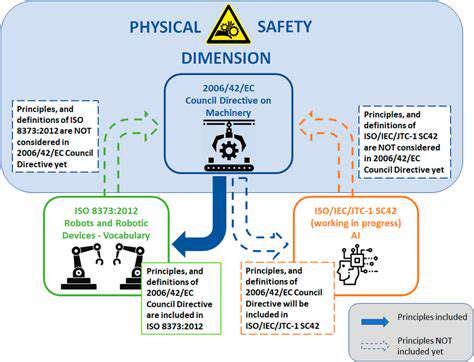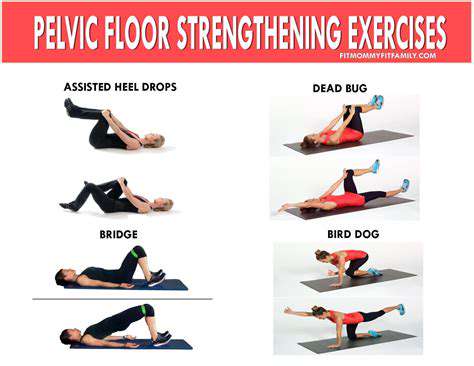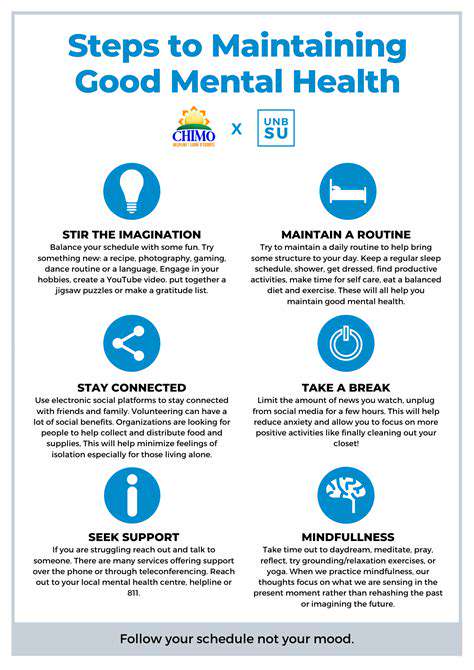How to Improve Your Relationship Communication for Mental Health
Improving Communication Through Consistent Effort
Understanding the Importance of Consistency
Effective communication isn't a one-time fix; it's a continuous process requiring consistent effort from both partners. This consistent effort fosters trust and understanding, creating a foundation for healthy dialogue and problem-solving. Recognizing that communication is an ongoing commitment, rather than a sporadic activity, is crucial for building strong relationships.
Active Listening: A Cornerstone of Effective Communication
Active listening goes beyond simply hearing words; it involves truly understanding the speaker's message, both verbally and nonverbally. This includes paying attention to their tone of voice, body language, and emotional cues. By actively engaging in the conversation and demonstrating empathy, you create a safe space for open and honest communication.
Focusing on the speaker and refraining from interrupting or formulating your response while they are still speaking is a vital part of truly understanding their perspective. This fosters a sense of respect and validation, which strengthens the relationship.
Clear and Concise Expression: Saying What You Mean
Expressing your thoughts and feelings clearly and concisely is just as important as actively listening. Avoid ambiguity or jargon that might confuse your partner. Be specific about your needs and concerns, using I statements to avoid placing blame. This direct and respectful communication style fosters clarity and avoids misinterpretations, which is key to resolving conflicts effectively.
Nonverbal Communication: The Unspoken Language
Nonverbal cues, such as body language, facial expressions, and tone of voice, often convey more than words. Being mindful of your nonverbal communication is essential for effective communication. Matching your verbal and nonverbal cues creates a more harmonious and trustworthy connection. Understanding and interpreting the nonverbal cues of your partner helps you gain a deeper understanding of their emotions and intentions.
Empathy and Emotional Intelligence: Stepping into Their Shoes
Empathy is the ability to understand and share the feelings of another. Developing empathy in your communication style allows you to connect with your partner on a deeper level, fostering understanding and compassion. It involves trying to see things from their perspective and acknowledging their feelings, even if you don't necessarily agree with them. This emotional intelligence is crucial in navigating disagreements and conflicts constructively.
Conflict Resolution Strategies: Navigating Disagreements
Disagreements are inevitable in any relationship. Instead of avoiding conflicts, learn constructive conflict resolution strategies. This involves approaching disagreements with respect, actively listening to your partner's perspective, and finding common ground. Focusing on finding solutions rather than assigning blame is essential to resolving conflicts in a healthy and productive manner.
Regular Check-ins and Open Dialogue: Maintaining Connection
Regular check-ins and open dialogues are vital for maintaining a strong connection. These opportunities allow you to discuss your thoughts and feelings, share updates on your lives, and address any concerns proactively. This consistent practice of open communication helps prevent misunderstandings and fosters a sense of intimacy and closeness in the relationship. Scheduling dedicated time for communication, even if it's just for a few minutes each day, can significantly improve the relationship.
Read more about How to Improve Your Relationship Communication for Mental Health
Hot Recommendations
-
*Guide to Managing Gout Through Diet
-
*Best Habits for Financial Well being
-
*How to Build a Routine for Better Mental Health
-
*How to Eat Healthy on a Budget [Tips & Meal Ideas]
-
*Guide to Practicing Self Acceptance
-
*How to Incorporate More Movement Into Your Day
-
*Guide to Managing Chronic Pain Naturally
-
*Guide to Building a Reading Habit for Well being
-
*Top 5 Weight Loss Supplements That Actually Work
-
*Best Exercises for Postpartum Recovery [Beyond Abdominal Work]




![What is the Mediterranean DASH Diet? [Benefits & How To]](/static/images/26/2025-05/MakingtheMediterranean-DASHDietaSustainableLifestyle.jpg)

![Guide to Heart Health for Women [Unique Risks & Prevention]](/static/images/26/2025-05/BeyondtheBasics3AAddressingSpecificConcerns.jpg)




